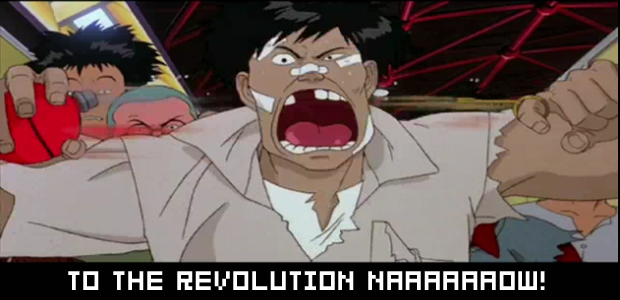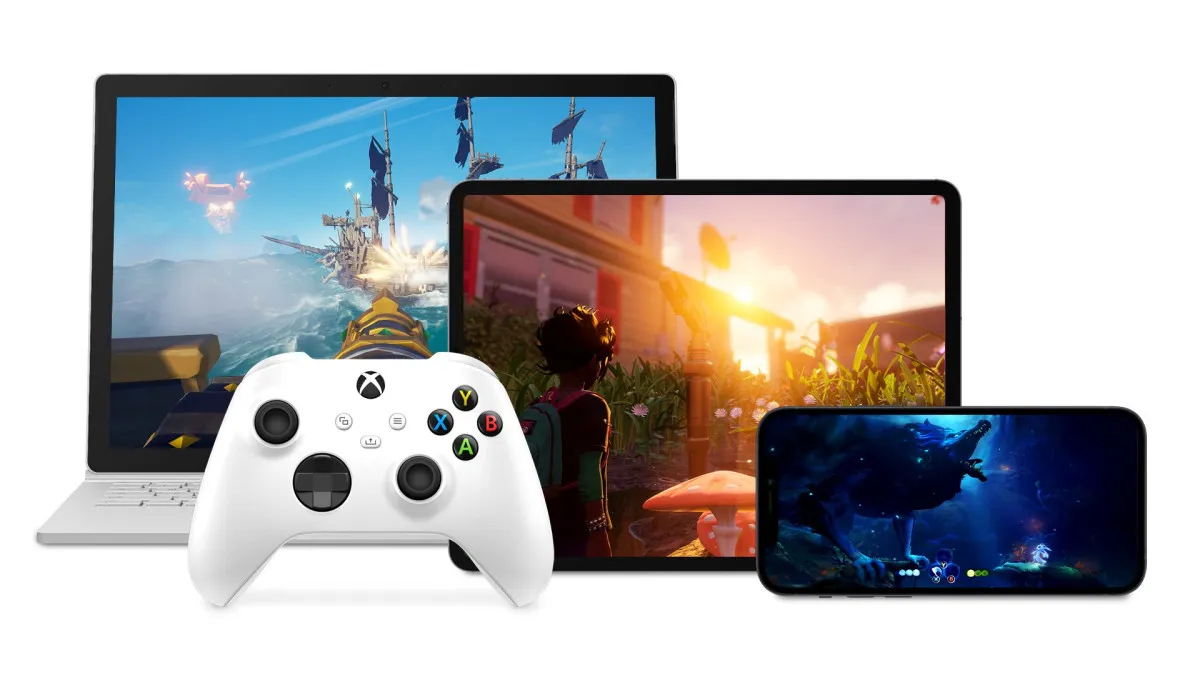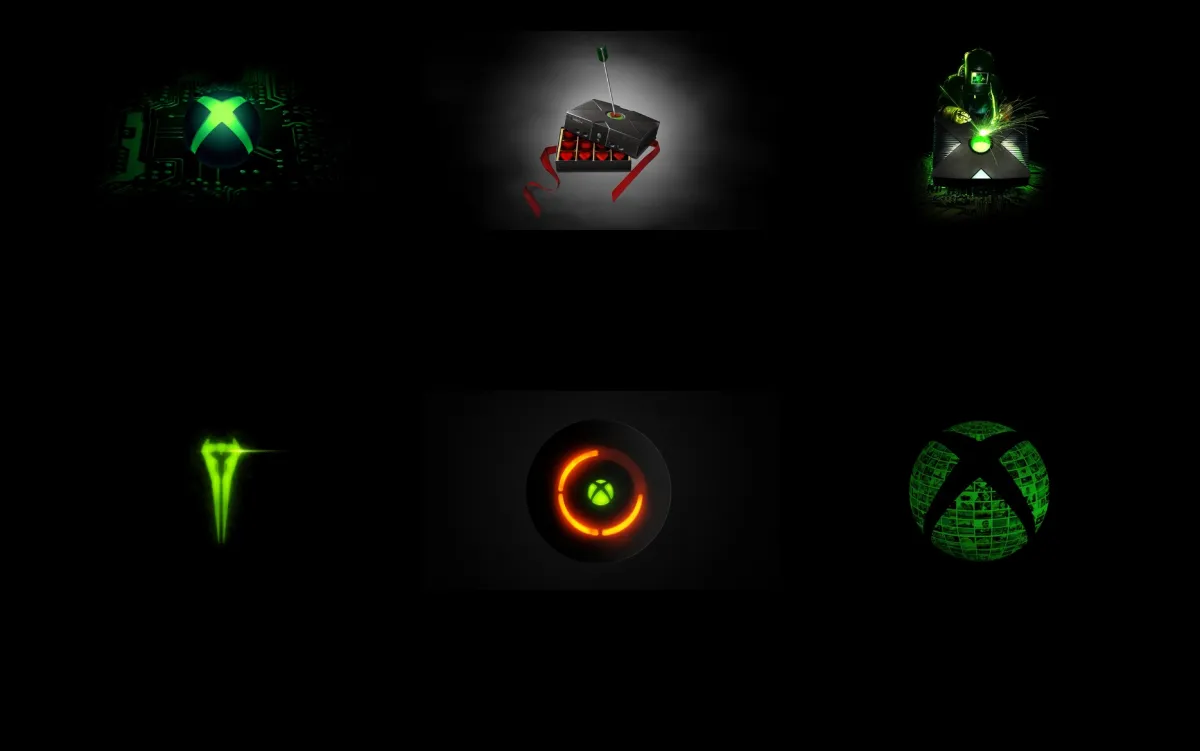Patriotism may not be my favorite thing ever, but I do love a good revolution. That’s a big part of why I love the videogame industry. In television, movies and music, truly revolutionary moments are few and far between. In videogames, they hit every couple of years, if not sooner. No artistic medium that I know of has evolved this far, this quickly. Knowing that videogames are in a perpetual growth spurt makes scouring for gaming news every morning a daily exercise in excitement.
Here’s a far-from-comprehensive list of some of the most (and least) successful revolutions of gaming’s past.
Atari brings the arcade home

Before the Atari, most home videogames were either “one game, one console” purchases like Pong, or run off of PCs, which at the time required long load times, learning a new computer-based language (load “*”,8,1), and tons other inconveniences. This gave home console gaming quite the bad name, especially compared to the allure and convenience of the arcade.The biggest attempt at gaming on a TV prior to that was the Magnavox Odyssey, a console that tried, and quickly failed, to make home console gaming a financial success. Before Atari came along, it looked like videogames for the mainstream crowd would be an arcade only affair for years to come.
Then Atari showed up with their 2600 console, and everything changed. While it would still be 20 years or so before the home console market would finally usurp the arcade market completely, Atari was the first developer to make the home console an effective supplement to the arcade experience. With it’s simple “one button, one stick” control scheme and diverse library of games that anyone could pick up and play, Atari managed to make the 2600 a must-have purchase for any serious videogame fan.
Nintendo knocks Atari out of the home console game

Atari was riding high with the 2600, but with the release of their next console, the Atari 5200, the company started to fall.
Though the console offered much improved graphics, the gameplay found on most 5200 games remained pretty much the same as those on the 2600. Also, the 5200’s controller was intimidatingly complicated, with four shoulder buttons and a dial-pad on the bottom that made it look like a portable phone. These controllers were also extremely easy to break. As a young lad, I personally broke at least three of them in as many months, while my old 2600 joystick still worked great with my Commodore 64 for years.
Atari tried to save face with the simplified controls and backwards compatibility of their next console, the Atari 7800, but by then it was too late. The Atari name had been permanently tarnished. Once again, home console gaming was in danger of dying out.
Long time 3rd party and arcade game developer Nintendo used this opportunity to sweep in and take over. With the Nintendo Entertainment System, they brought simplified controls, a toy-like robot for non-gamer appeal, arcade-perfect graphics, and most importantly, a diverse library of games that worked to push the medium in new directions.
Atari wouldn’t give up completely. A few years later, they came out with the Atari Jaguar, a console that used pure power (and again, a controller that had a weird looking dial-pad on the bottom) to try to muscle their way back into the home console arena. Not surprisingly, it failed, mostly because the games just weren’t there.
Sadly, this is almost exactly what happened to Atari with it’s home portable console a few years earlier.
Black, white, and cheap dominate the portable market

When I was 14, I was sure that the Atari Lynx was going to be the next big thing. Sure, it cost more than the Gameboy, but it had 16-bits of pure graphics! It had an exclusive sequel to Gauntlet, and a new California Games! If you were left handed, you could turn the thing over and use your left hand to hit the buttons, and the screen would flip over for you! THIS THING WAS WAH-MAZING!
Well, in the end, not all that many left handed people bought the Lynx. In fact, almost no one bought it. Even after a few slim-model reboots and almost high-profile releases, the console just couldn’t stay alive. It was the Gameboy, which saw release in the same years as the Lynx, that killed the sad black portable. That’s something that I still can’t fully wrap my head around.
The Gameboy featured black-and-green graphics, not 16-bits of graphics. It did not have California Games, and did not make any special accommodations for left handed players. How could such an inferior system succeed against the Lynx? What I didn’t get at the time was that it’s fun, accessible experiences, not graphics and gimmicks, that make or break a console. The Gameboy had Tetris, Mario, Metroid, and countless other series that people were willing to follow anywhere, even to a monochrome wasteland like the Gameboy.
The console also continued the NES’s push towards simplified controls. With just two face buttons to look at, the Gameboy was extremely welcoming in appearance. The Lynx also used two face buttons, but due to it’s left handed tricks, it looked like it had four (two on top, and two on the bottom). It was also called the “Lynx”, which was probably only appealing to teenage boys who wish they had claws and fangs. The Gameboy sounds like it would appeal to just about anybody (except those who hate boys and games, obviously).
With the Gameboy, Nintendo gained a foothold on the home market that they have yet to lose twenty years later. Many, many portable consoles have since tried to beat Nintendo’s Gameboy and it’s successors. Almost all of them have used exclusive games and improved graphics to attempt that feat. Thus far, none have succeeded at knocking Nintendo off their throne. With the 3DS on the way, it’s looking ever more likely that Nintendo will retain it’s place as the #1 portable console developer for some time.
Motion controls that didn’t revolutionize anything
These days, people are freaking out about motion controls. People who hate them really hate them, and take the opportunity to spread their hate whenever possible. People who love them don’t tend to be as vocal, but if the continued sales dominance of the Wii is any indication, they certainly like to spend money. I’m sure Sony and Microsoft think they do too, or else they wouldn’t have invested millions of dollars in their own motion-control schemes.
Microsoft’s attempt to milk the motion-controlled cow comes in the form of a controller-free interface. It’s called Kinect. You may have heard of it. It could end up being a big deal, something that changes the way we all play videogames.
Or it could end up being like the Sega Activator.
Later in the Sega Genesis’s lifespan, Sega released a full body controller that was compatible with many fighting games and other titles that precluded some simulation of total body movement. It was Sega’s least successful peripheral of the time (which is saying a lot). Reasons for that vary from inconsistent control accuracy, lack of compelling software, and the reigning belief that the thing was just too hard to use. Where most successful applications of motion controls today make games more easy and intuitive to play, the Activator just made things more complicated.
Lets hope that Kinect doesn’t fall into the same traps that the Activator did.
3D gaming in the palm of you hands (and on your face)
Here’s another failed revolution, one that’s equal parts sad and amusing. You can’t blame Nintendo for trying with the Virtual Boy. It’s not like they hadn’t succeeded in the past with a console that only offered monochrome visuals. Sadly, with the Virtual Boy, lightning did not strike twice. The console stands among Nintendo’s greatest failures.
Just as I’m hoping that the Activator isn’t a sign that full body motion control is a bad idea, I’m hoping that the 3DS will prove that 3D portable gaming can work. The fact that the 3DS allows you to turn the 3D off is definitely a good sign.
I wonder if the Virtual Boy could have succeeded if you could turn the 3D (and the monochrome) off?
Online gaming and home consoles make nice

This one isn’t a revolution for the majority of gamers, but it’s certainly meaningful for millions of people today, especially game developers. Largely because of Xbox Live and it’s streamlined online interface and matchmaking systems, online play has gone from an anomaly to a must-have feature for most high-profile home console releases.
Everything from the competition-inspiring achievement/gamer score system, to the communication-inspiring cross-game chat, to the option for DLC, to the freedom to play with friends and total strangers; everything about XBL just clicks with what modern online-gaming enthusiasts want. It would take something as big as XBL to make online gaming on home consoles work. Other developers and publishers have tried online gaming on consoles for years, without ever coming close to the success that XBL has found.
Sure, the advent of the cheap, high-capacity hard drive and widespread use of of cable internet did a lot to help as well, but there is no denying that XBL made home console online gaming what it is today. That’s probably why it remains the dominant force in its market. It’s hard to imagine that Sony and Nintendo won’t work to more closely emulate the service for their next round of home consoles.
The CD Rom kills the arcade

This one is what I consider the last truly all encompassing revolution to hit the gaming scene. The XBL revolution is a big deal, but it’s yet to affect all of gaming as we know it. There are a lot of other smaller revolutions going on right now as well; Western 3rd party developers are muscling Japanese 3rd party developers out of the scene, motion controlled games continue to change the way that the mainstream perceives videogames, indie games are finally making money thanks to digital distribution on home consoles, the list goes on. Those all may prove to be noteworthy in themselves, but none of those revolutions-in-the-making are time tested enough to be definitively meaningful.
Sadly, the death of the modern arcade is more definitive than that. It’s hard for a lot of teenagers today to imagine it, but arcades used to be everywhere; some in small corners of bowling alleys, some in gigantic buildings with multiple floors packed to the gills with arcade cabinets. It used to be that if you wanted to play the best looking games that the world had to offer, you had to head to the arcade to do so, and there was always an arcade to go to.
When CD ROMs first hit the home console scene, that started to change. I’ll never forget playing Fighting Street on the the Turbo Grafx CD and thinking to myself “man, this is just as good as the arcade game”, then popping in Y’s Book 1 and 2 and thinking “man, this is better than anything I’ve ever seen in the arcades! I’m going to be saving a lot of quarters!”.
It wasn’t all about visuals, either. CD ROMs didn’t immediately make all games better looking on home consoles, but they did give them the capacity to be deeper. Just as CD ROM-based games out-classed their cartridge-based home console competition, they also made for a style of game that just didn’t work in the arcades.
With CD ROM games came the advent of ten-minute long cut-scene, the fully voice acted videogame, that “it’s just like a movie!” experience that made games like Resident Evil, Final Fantasy VII, and Metal Gear Solid such huge hits on the PS1. Arcades not only couldn’t offer those kinds of experiences, but you wouldn’t want them to. Playing “cinematic” games in a crowded, noisy environment would only dampen the experience. You wouldn’t want to play Metal Gear Solid in an arcade, especially at “quarter per life” pay-rate. While Atari 2600 was the first to make the living room a viable location for serious gaming, it was the CD ROM based games that finally made your own home the best place to game.

When DVDs replaced CDs as the primary means of game distribution, it only got worse for arcades. While arcades had tried to keep up with home consoles with ever-more powerful hardware, the home console market easily kept pace, and even lapped arcade hardware with ease. When Capcom put out their highly expensive CPS-3 CD based arcade hardware, the Dreamcast managed to perfectly port CSP-3 games for a fraction of the same cost shortly after, and with added features to boot. Now home consoles could offer experiences that arcades couldn’t, and they could take the best games from the arcade, make them even better, and then give them to you for keeps. No more renting time on an arcade machine for a $.25 a minute. Now you could throw down $50, and have your favorite arcade games forever.
Personally, I think the arcade has a chance of making a comeback. If they change the pay-to-play system so that it’s more like an internet cafe, and the “new arcade” games are made to appeal to the new motion-control and 3D markets, they could find a way to make some money. There are a lot of people that want to see what videogames are all about, but aren’t willing to throw down +$200 on a home console to find out. Give those people a place to go to for the afternoon with their families, check out some expensive tech (like 3D TVs) and accessible games (like what the Wii/Kinect/PS Move have to offer), throw in some cheap tasty food and a marketable logo, and you may have yourself a money-maker.
But hey, enough out of me, what are the revolutions in gaming that mean the most to you? What trends in gaming were you glad to see come, or go? Do you see any parallels between consoles of the past and consoles of the present? What are the aspects of gaming-gone-by that you miss the most?




